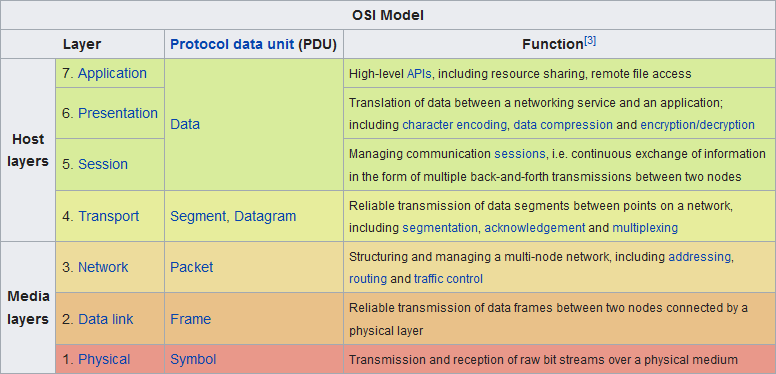One more piece of context must be added to the discussion I’ve written up here, here, and here, and that is the place of these operations in the 7-layer OSI communications model.
The image above is copied from and linked to the appropriate Wikipedia page. The clarification I’m making is that, in general, all of the operations I’m describing with respect to monitoring and logging take place strictly at level 7, the application layer. This is the level of the communication process that application programmers deal with in most cases, particularly when working with higher-level protocols like TCP/IP and HTTP, even if that code writes specific information into message headers along with the messages.
Some applications will work with communications at lower levels. For example, I’ve worked with serial communications in real-time C++ code triggered by hardware interrupts where the operations at layers 5 and 6 were handled in the application, but the operations at layers 1 through 4 were handled by default in hardware and firmware and routing isn’t a consideration because serial is just a point-to-point operation. Even in that case, the monitoring and logging actions are performed (philosophically) at the application layer (layer 7).
Finally, it’s also possible to monitor configuration of certain items at lower levels. Examples are ports, urls, IP addresses, security certificates, authorization credentials, machine names, software version numbers (including languages, databases, operating systems), and other items that may affect the success or failure of communications. Misconfiguration of these items are likely to result in complete inability to communicate (e.g., incorrect network settings) or strange side-effects (e.g., incorrect language versions, especially for virtual machines supporting Java, JavaScript/Node, PHP, and the like).

